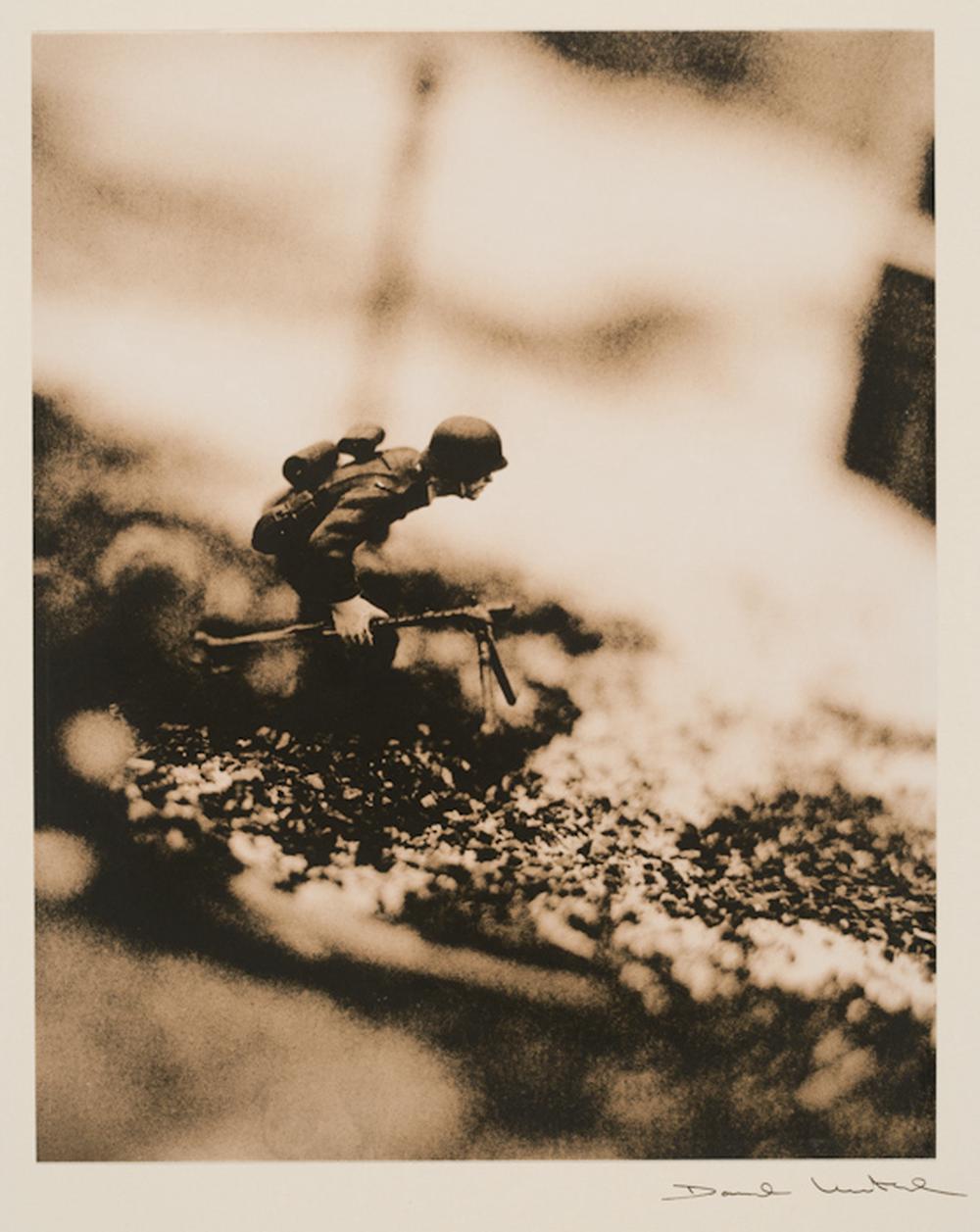David Levinthal. War Games

David Levinthal started photographing German war toys in a pseudo-documentary style while studying social documentary photography at Yale University. He arranged groups of tiny soldiers on a white background with a few simple props, photographing them with soft focus and printed them on sepia-tone paper, achieving a sense of intimacy and authenticity. “I try to create a feeling almost as if you were Robert Capa photographing World War II . . . where, as the viewer . . . you’re looking through the camera,” the artist explained of this work.1 When he graduated with his MFA in 1973, Levinthal showed his work to cartoonist Garry Trudeau—his Yale peer known for the Doonesbury (1970–present) comic strip—and the two embarked on a book project, Hitler Moves East: A Graphic Chronicle, 1941–43 (1977), that married Trudeau’s linear framework to Levinthal’s images. Trudeau worked from accounts of the German invasion of the Soviet Union during World War II and sent Levinthal requests for specific images. As Trudeau described, “the photographer would go to extraordinary lengths . . . including setting fire to whole sections of his living room rug, in single-minded pursuit of the desired effect.”2 Though Levinthal’s photographs didn’t hide that his subjects were toys, upon first look they seem like documentation. “I thought I was looking at real photos of World War Two,” wrote the artist Richard Prince in 2010, recalling coming across Hitler Moves East at a bookstore in 1979.3 The effect is disorienting and challenges perceptions of the veracity of images.
David Levinthal, Hitler Moves East, Mana Contemporary TV, posted December 14, 2015, video, 1:52 minutes, available at youtube.com/watch?v=bntIWGhDf20. ↩︎
Garry Trudeau, Hitler Moves East: A Graphic Chronicle, 1941–43 (Kansas City: Sheed Andrews and McMeel), 7. ↩︎
Richard Prince, “Look Out Whitey,” in David Levinthal: Bad Barbie (New York: JMc & GHB Editions, 2009). ↩︎